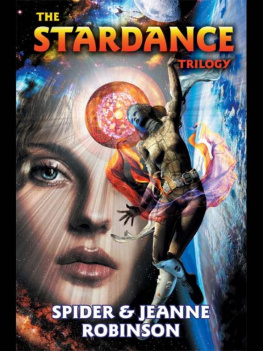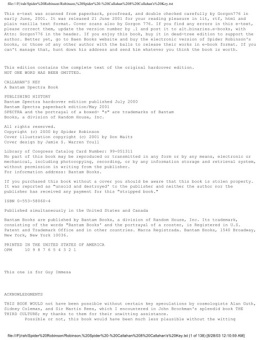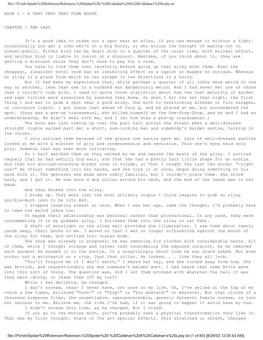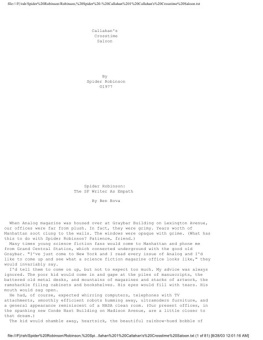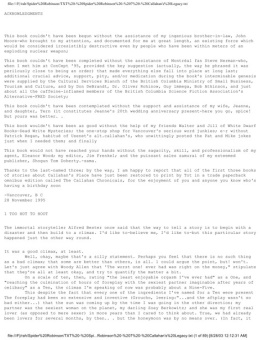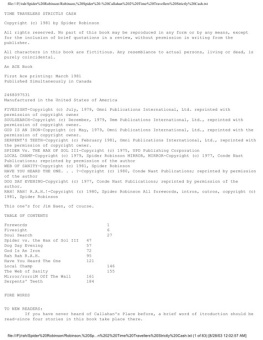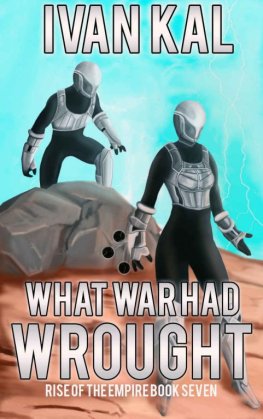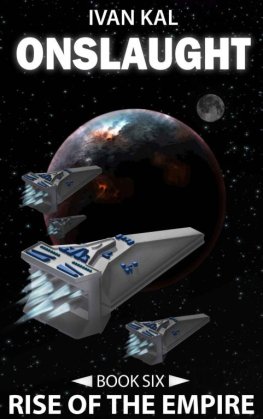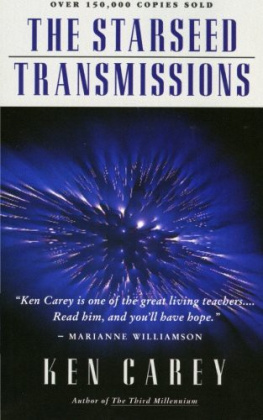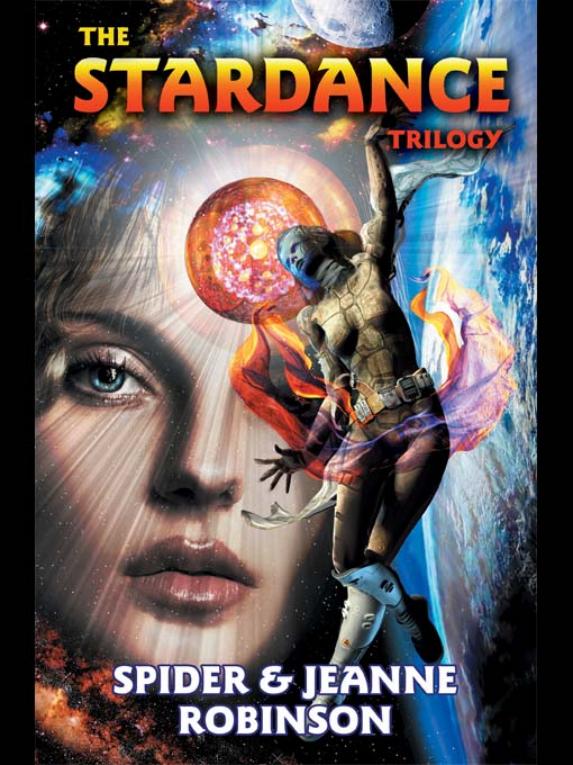The Stardance Trilogy
Spider & Jeanne Robinson.
This is a work of fiction. All the characters and events portrayed in this book are fictional, and any resemblance to real people or incidents is purely coincidental.
Stardance copyright 1977, 1978, 1979; Starseed copyright 1991, Starmind copyright 1994, by Spider & Jeanne Robinson.
A Baen Book Original
Baen Publishing Enterprises
P.O. Box 1403 Riverdale, NY 10471
www.baen.com
ISBN 10: 1-4165-2082-1
ISBN 13: 978-1-4165-2082-2
Cover art by Kurt Miller
First Baen printing, September 2006
Library of Congress Cataloging-in-Publication Data
Robinson, Spider.
The stardance trilogy / by Spider & Jeanne Robinson.
p. cm.
"A Baen Books original."
ISBN-13: (invalid) 978-1-4165-2082-2
ISBN-10: 1-4165-2082-1
1. Science fiction, American. I. Robinson, Jeanne. II. Title.
PS3568.O3156S725 2006 813'.54--dc22 2006012263
Distributed by Simon & Schuster 1230 Avenue of the Americas New York, NY 10020
Printed in the United States of America
Baen Books
by Spider Robinson
Callahan's Lady
Lady Slings the Booze
The Stardance Trilogy (with Jeanne Robinson)
Lifehouse
User Friendly
Telempath
Very Bad Deaths
STARDANCE
This one's for Luanna Mountainbourne,
who may well make prophets of us one day...
"In order to find one's place in the infinity of being,
one must be able both to separate and unite."
I Ching
Acknowledgments
What we'd like to do here is thank all the people without whom this book could not have been finished, as opposed to, but not excluding, that general gang of friends and relatives who kept us alive during its writing; they would have done so anyway, book or no book, and should be thanked in different ways.
Among the former and sometimes the latter are: Ben Bova, Gordon R. Dickson, our agent Kirby McCauley, our editor and friend Jim Frenkel, Joe W. Haldeman, Jerry Pournelle, Ph.D., and Laurence Janifer, all of whom donated information, advice, and assistance above and beyond the call of friendship, all at the cost of working time or leisure or both. It should be clearly understood that none of the above people are to blame for what we have done with their information and aid: any errors are ours.
On a less personal but just as basic level, this book could also never have become what it is without A House In Space, Henry S.F. Cooper's fascinating account of zero-gee life in Skylab; G. Harry Stine's The Third Industrial Revolution, which built Skyfac in our minds; the recent works of John Varley and Frank Herbert, who roughly simultaneously pioneered (at least as far as we know) the concept on which the ending of this book depends; Murray Louis's exquisite and moving columns in Dance Magazine; the books, past advice and present love of Stephen Gaskin; the inspirational dance of Toronto Dance Theatre, Murray Louis, Pilobolus, the Contact Improv Movement, and all of our dancing buddies in Nova Scotia; the lifework of Robert Heinlein, Theodore Sturgeon, Edgar Pangborn, and John D. MacDonald; the whiskey of Mr. Jameson, the coffee of Jamaica, and the music of Frank Zappa, Paul Simon, and Yes.
I
I can't really say that I knew her, certainly not the way Seroff knew Isadora. All I know of her childhood and adolescence are the anecdotes she chanced to relate in my hearingjust enough to make me certain that all three of the contradictory biographies on the current best-seller list are fictional. All I know of her adult life are the relatively few hours she spent in my presence and on my monitorsmore than enough to tell me that every newspaper account I've seen is fictional. Carrington probably believed he knew her better than I, and in a limited sense he was correctbut he would never have written about it, and now he is dead.
But I was her video man, since the days when you touched the camera with your hands, and I knew her backstage: a type of relationship like no other on Earth or off it. I don't believe it can be described to anyone not of the professionyou might think of it as somewhere between co-workers and combat buddies. I was with her the day she came to Skyfac, terrified and determined, to stake her life upon a dream. I watched her work and worked with her for that whole two months, through endless rehearsals, and I have saved every tape and they are not for sale.
And, of course, I saw the Stardance. I was there. I taped it.
I guess I can tell you some things about her.
To begin with, it was not, as Cahill's Shara and Von Derski's Dance Unbound: The Creation of New Modern suggest, a lifelong fascination with space and space travel that led her to become her race's first zero-gravity dancer. Space was a means to her, not an end, and its vast empty immensity scared her at first. Nor was it, as Melberg's hardcover tabloid The Real Shara Drummond claims, because she lacked the talent to make it as a dancer on Earth. If you think free-fall dancing is easier than conventional dance, you try it. Don't forget your dropsickness bag.
But there is a grain of truth in Melberg's slanders, as there is in all the best slanders. She could not make it on Earthbut not through lack of talent.
I first saw her in Toronto in July 1989. I headed Toronto Dance Theater's video department at that time, and I hated every minute of it. I hated everything in those days. The schedule that day called for spending the entire afternoon taping students, a waste of time and tape that I hated more than anything except the phone company. I hadn't seen the new year's crop yet, and was not eager to. I love to watch dance done wellthe efforts of a tyro are usually as pleasing to me as a first-year violin student in the next apartment is to you.
My leg was bothering me more than usual as I walked into the studio. Norrey saw my face and left a group of young hopefuls to come over. "Charlie... ?"
"I know, I know. They're tender fledglings, Charlie, with egos as fragile as an Easter egg in December. Don't bite them, Charlie. Don't even bark at them if you can help it, Charlie."
She smiled. "Something like that. Leg?"
"Leg."
Norrey Drummond is a dancer who gets away with looking like a woman because she's small. There's about a hundred and fifteen pounds of her, and most of it is heart. She stands about five-four, and is perfectly capable of seeming to tower over the tallest student. She has more energy than the North American Grid, and uses it as efficiently as a vane pump (do you know the principle of a standard piston-type pump? Go look up the principle of a vane pump.) There's a signaturelike uniqueness to her dance, the only reason I can see why she got so few of the really juicy parts in company productions until Modern gave way to New Modern. I liked her because she didn't pity me. We lived together once, but it didn't work out.
"It's not only the leg," I admitted. "I hate to see the tender fledglings butcher your choreography."
"Then you needn't worry. The piece you're taping today is by... one of the students."
"Oh fine. I knew I should have called in sick." She made a face. "What's the catch?"
"Eh?"
"Why did the funny thing happen to your voice just as you got to 'one of my students'?"
She blushed. "Dammit, she's my sister."
Norrey and I go back a long way together, but I'd never met a sisternot unusual these days, I suppose. My eyebrows rose. "She must be good then."

